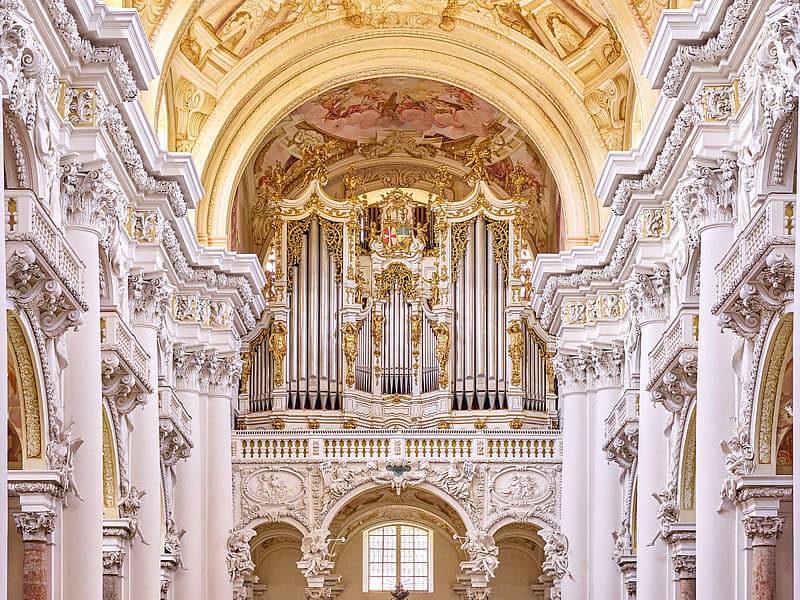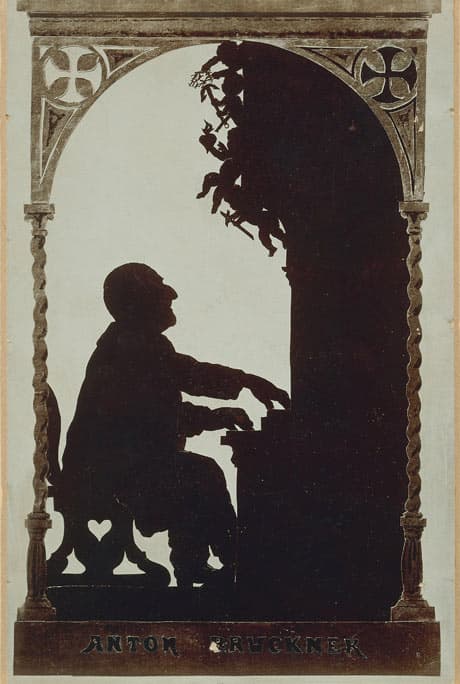Born in the tiny village of Ansfelden on 4 September 1824, Anton Bruckner became one of the most innovative figures of the second half of the 19th century. Today we primarily remember him for his symphonies and sacred compositions, rooted in the traditions of Beethoven and Schubert, with harmonic inflections and orchestration taken from Richard Wagner.
Anton Bruckner: “An dem Feste” (At the Festival) (Mannerchor Bruckner 12; Thomas Kerbl, cond.)
Bruckner’s Ancestry and First Education

Anton Bruckner
Located between the Danube and the foothill of Upper Austria, Ansfelden is essentially today a suburb of the provincial capital of Linz. In 1824, however, it was just a small and isolated farming community. The Bruckner family had lived in the area for over four centuries, with ancestry traced back to a feudal peasant around 1400. Bruckner’s grandfather was in the broom-making trade, but when he married the daughter of a schoolmaster, he took up the teaching profession. His son Anton became his assistant and married Therese Helm, the daughter of a civil servant and innkeeper.
As such, their eldest son Anton, born on 4th September 1824, just like Schubert, was a schoolmaster’s son. That particular position included the responsibilities of organist and director of music for the village church. As Bruckner later recalled, his favourite place growing up was in church, next to his father on the organ bench. His mother also had musical talent, sporting a fine singing voice, and by the age of four Anton was playing a few hymns on a miniature violin. To be sure, his father did everything in his power to stimulate the musical talents of his son.
Anton Bruckner: Asperges me, WAB 4 (Musica Saeculorum; Philipp von Steinaecker, cond.)
A Chorister at the St Florian Monastery

St Florian Monastery
At the age of 10, Bruckner was helping his father with organist duties, and it was decided to send him for musical studies with his godfather Johann Baptist Weiss. He was a schoolmaster’s assistant and organist in the village of Hörsching, and described as a genuine artistic personality. Weiss had composed a number of church compositions in the Viennese classical style, and Bruckner was forever grateful for the first serious lessons in harmony, figured bass, and organ and violin playing. In addition, young Anton was introduced to a wider repertory of church music.
When Bruckner’s father fell ill, Anton returned to Ansfelden to help in the church and school, and after his father’s death, he was sent to the monastery of St Florina as a chorister. His first stay at the monastery lasted three years, and a biographer writes. “If his Roman Catholicism had already been firmly established during his boyhood in Ansfelden, it was certainly reinforced here. The Baroque halls of the monastery were to be a source of spiritual strength and inspiration for the rest of his life.”
Anton Bruckner: Prelude and Fugue in C minor, WAB 131 (Jean Galard, organ)
First Teaching Positions

The Bruckner Organ © stift-st-florian.at
Bruckner was particularly fascinated by the great organ, known today as the “Bruckner Organ.” It was built by Chrismann in 1771 and had about seventy stops. His education continued with lessons in reading, writing, arithmetic and included organ and piano lessons from the noted organist Anton Kattinger, violin lessons from Gruber, who had studied with Schuppanzigh, and studies in musical theory, and figured bass. However, by 1840 it was time to choose a career, and it was quickly decided that he should follow in his father’s footsteps. While continuing his musical studies, he was taking teacher-training courses in Linz.

Anton Bruckner playing the organ
Just one year later, Bruckner set out for his first teaching position in the remote village of Windhaag, where he remained as an assistant schoolteacher for 16 months. His duties included teaching, assisting with church music, and helping out with farming chores. Bruckner supplemented his meagre income by playing the violin at community festivities. Bruckner secured a new teaching position in the village of Kronstrof, which allowed him to walk three times a week to the town of Enns to study theory with Leopold von Zenetti. It is surprising that Bruckner found time to compose, and the only surviving composition from the Windhaag period is a Mass in C, aptly nicknamed “Windhaager Messe).
For more of the best in classical music, sign up for our E-Newsletter
Anton Bruckner: Mass in C Major (Windhaager Messe) (Ludmila Kuznetzova, mezzo-soprano; Ludmilla Golub, organ; Stanislav Davydov, horn; Alexei Shanin, horn)
